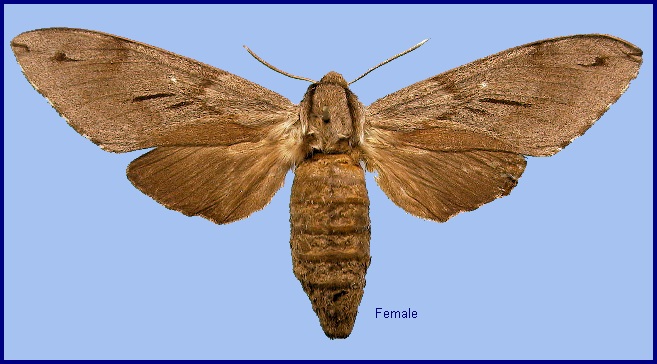
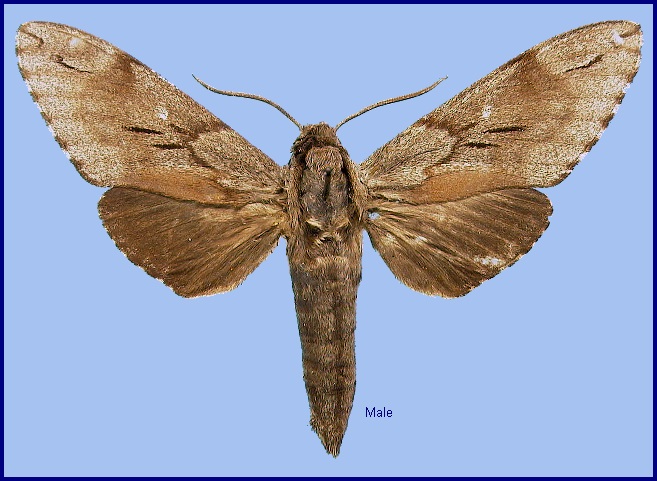
Hyloicus caligineus Butler, 1877, Ann. Mag. nat. Hist. (4) 20: 393. Type locality: [Japan, Honshu, Kanagawa,] Yokohama.
Synonym. Sphinx caligineus (Butler, 1877).
[Further details on this species in Japan, as well as photos of many stages, can be found on Digital Moths of Japan.]
Very similar to Hyloicus pinastri, but differs in the following: hindwing less elongate; antenna proportionately longer; foretibia with fewer spines; midtibia with no spines other than sometimes some minute apical ones; hindtarsal first segment shorter than hindtibia, as long as segments 2-5 together; hindtibia with long apical spur less than half the length of first hindtarsal segment. Darker brown than Hyloicus caligineus sinicus, which is more grey-brown.
Male genitalia similar to that of Hyloicus pinastri, but: uncus longer and much narrower; gnathos sinuate, more obviously so than in Hyloicus caligineus sinicus, not completely divided mesially; valve more rounded; harpe with both processes shorter, the dorsal one branching from the dorsal margin of the other and longer than in Hyloicus caligineus sinicus, curving dorsad apically; phallus with apical process longer, much longer than in Hyloicus caligineus sinicus. In the female genitalia, ostial plate with lobe proximal to ostium longer and narrower than in Hyloicus pinastri, but individually variable.
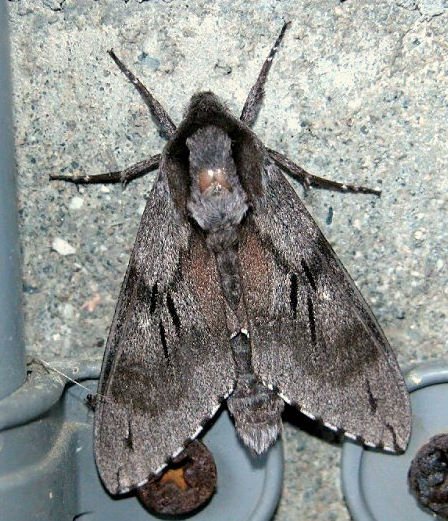
Japan: 19.iv (Shikoku); 8.v-5.vi (Honshu); 8.vii-28.viii (Honshu).
OVUM: Undescribed.
LARVA: Full-fed 75--80mm. Fully grown, larvae are always green with a broad brown dorsal band bearing an 'eye-like' patch per segment. There are three cream or white lateral stripes, the white dorso-lateral and more yellow ventro-lateral ones being particularly bold: ventral surface and anal claspers brown. The lateral pale line (in the green area) is less pronounced, broken, and often edged below with black streaks which, in some larvae, may join up to form a solid black line. The whole body, which is slender and of even thickness (cylindrical), has dark, sunken, encircling lines, apparently dividing it up into narrow rings behind a large, prominent head. The body is smooth, but not glossy, unlike the head, underside, legs and shield. Head brown, with dark and pale yellow vertical cheek stripes. Shield also striped dark and pale. Horn thin, almost black, and warty; evenly curved.
This is in distinct contrast to the larva of Hyloicus caligineus sinicus Rothschild & Jordan, 1903, which is always grey-brown, indicating that the two taxa may be distinct species and not just subspecies.
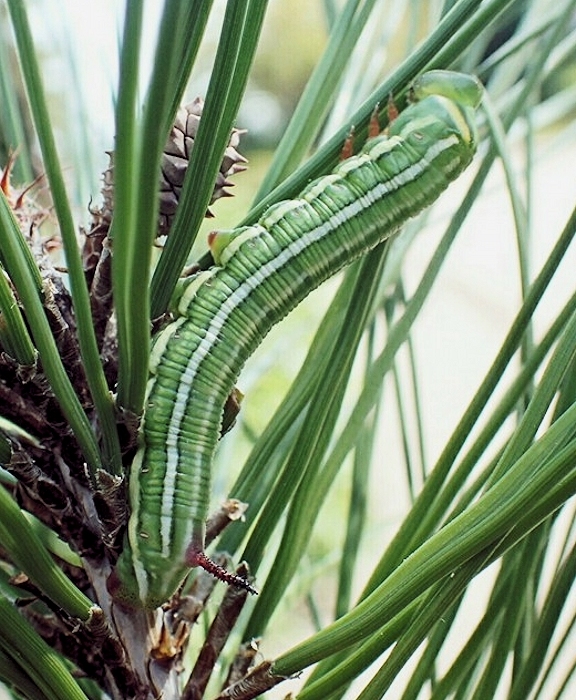
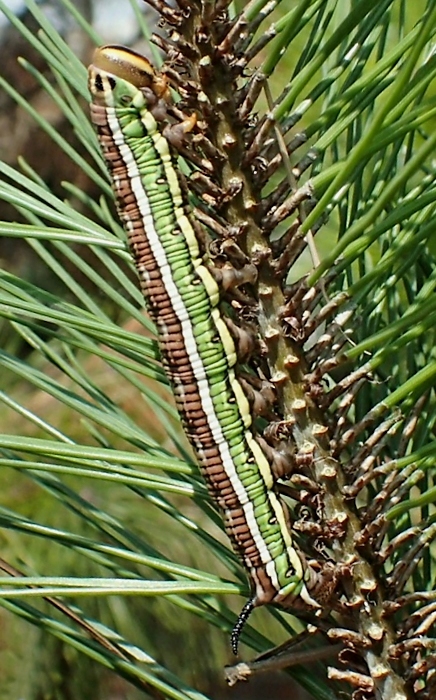
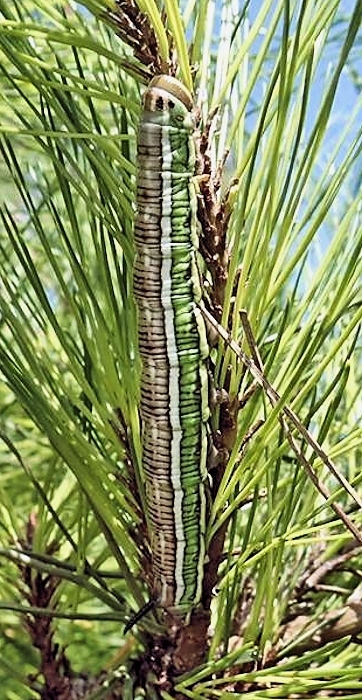
PUPA: Undescribed.
Larval hostplants. Various species of Pinus.
Tachinidae: Drino (Zygobothria) atropivora (Robineau-Desvoidy, 1830); Scelionidae: Telenomus dendrolimi (Matsumura, 1925).
Japan: Hokkaido; Honshu (Komaba; Yokohama; Tokyo; Kobe; Gifu; Fushiki; Nagahama; Tokei-ji; Tsuruga; Goshikinuma; Mt. Akagi; Ogimachi; Akita; Fujisawa; Aone; Fukushima; Hatamachi; Minami-Kiso; Nagamine Sakusi; Tobira Spa; Bushi; Unazuki); Shikoku (Hidaka); Kyushu.
Endemic to Japan. Records from elsewhere are the result of misidentifications.
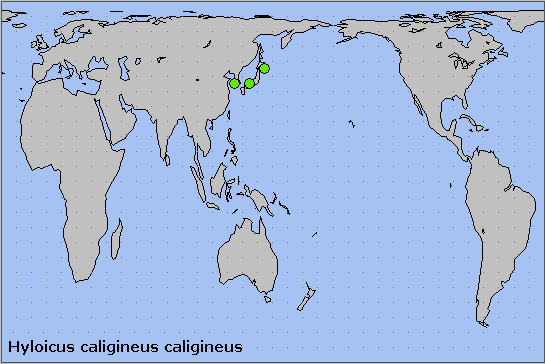
 Return to Sphingidae of the Eastern Palaearctic species list
Return to Sphingidae of the Eastern Palaearctic species list